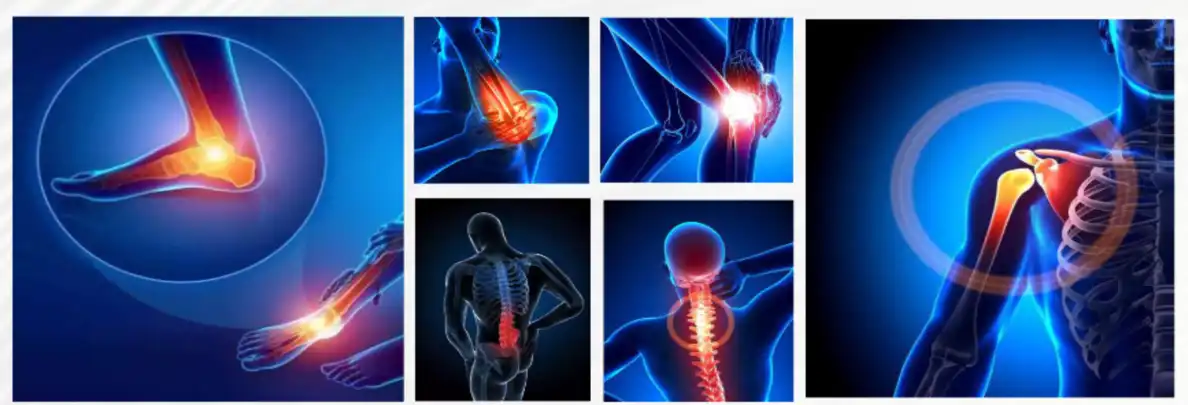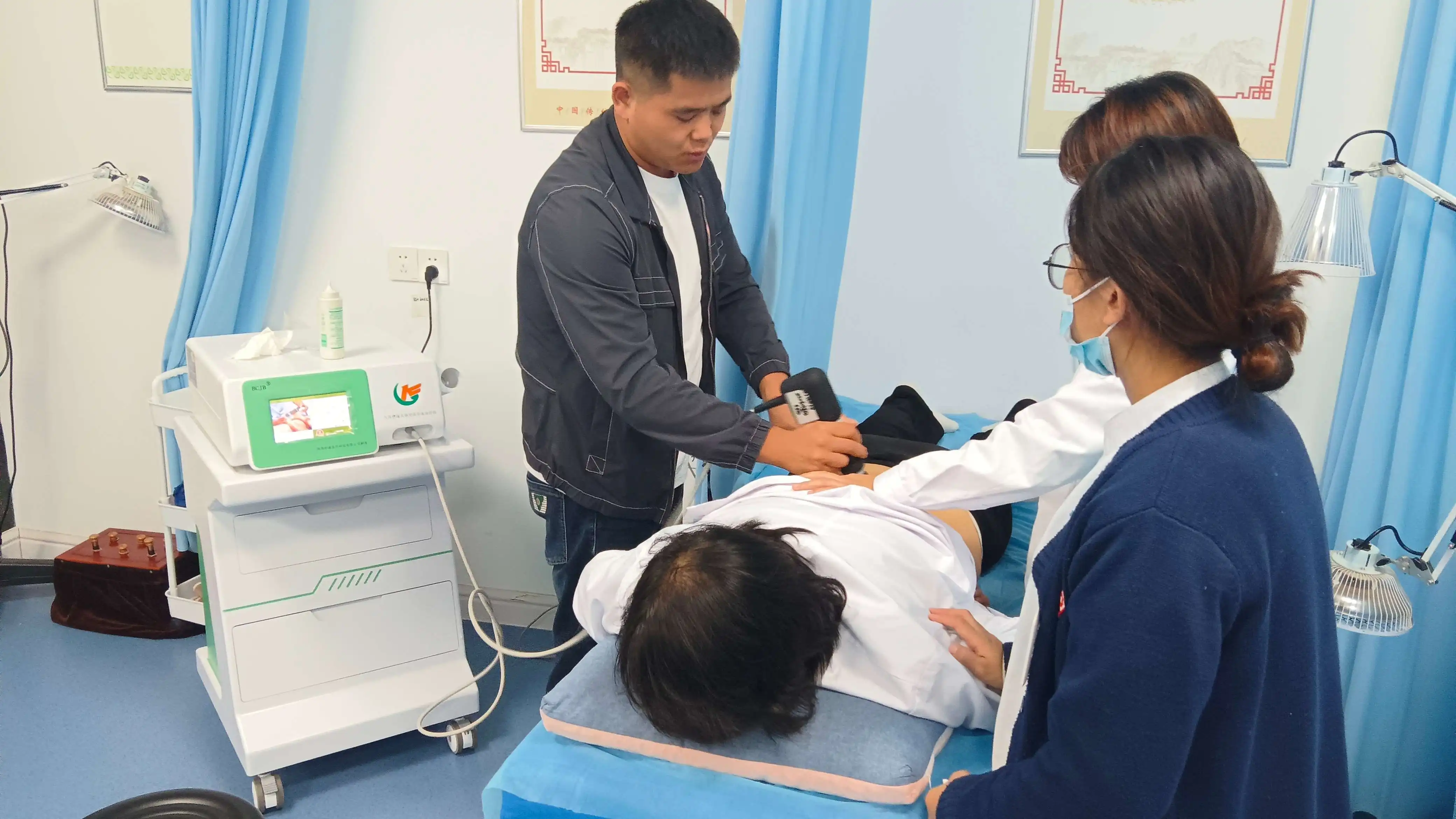In the ever-evolving landscape of medical technology, shockwave therapy devices have emerged as a remarkable innovation, particularly the Portable Low Intensity Shock Wave Therapy Machine. These devices are making waves (pun intended) in various fields of medicine, offering new hope and treatment options for patients. But what exactly are they, and how do they work? Let's take a closer look.

Unveiling the Technology
A shockwave therapy device, at its core, is a machine designed to generate and deliver focused shock waves to specific areas of the body. The Portable Low Intensity Shock Wave Therapy Machine takes this concept a step further by combining convenience with effective treatment. It operates on the principle of using acoustic waves, which are emitted in a controlled and precise manner. These waves have the unique ability to penetrate the skin and reach deep into the underlying tissues, all while maintaining a relatively low intensity. This is crucial as it allows for a more tolerable experience for the patient compared to higher intensity counterparts.
How It Functions
When activated, the device sends out these gentle yet powerful shock waves. In the case of musculoskeletal disorders, for example, if you're dealing with a nagging tennis elbow or plantar fasciitis, the shock waves target the affected area. They interact with the damaged tissues in multiple ways. Firstly, they can break up fibrotic or scar tissue that may have formed due to injury or overuse. This is like a microscopic demolition crew, clearing the way for healthy tissue to regenerate. Secondly, the shock waves stimulate blood flow to the region. By increasing circulation, essential nutrients and oxygen are rushed to the damaged site, fueling the body's natural healing processes. It's as if the device is jump-starting the body's internal repair mechanisms.
The Portability Advantage
One of the standout features of the Portable Low Intensity Shock Wave Therapy Machine is its portability. Traditional shockwave therapy devices were often large, bulky, and confined to clinical settings. However, with advancements in technology, these portable versions have become a game-changer. Healthcare providers can now take them to patients in different locations, such as in-home visits for those who have difficulty traveling to a clinic. Athletes on the go can also benefit, as they can have access to treatment even while on tour or during training camps. This means that timely treatment is no longer restricted by geographical location or the inconvenience of scheduling clinic appointments.
Applications in Different Medical Fields
The applications of shockwave therapy devices, especially the portable ones, span across various medical specialties. In orthopedics, as mentioned earlier, it's a go-to for treating common overuse injuries. But it doesn't stop there. In urology, there's growing interest in using these devices for conditions like erectile dysfunction. The shock waves can potentially enhance blood flow to the penile arteries, stimulating the growth of new blood vessels and improving overall erectile function. In dermatology, some research suggests it could aid in wound healing, as the increased blood flow and tissue stimulation can accelerate the repair of damaged skin.
Patient Experience and Comfort
Patients who undergo treatment with a Portable Low Intensity Shock Wave Therapy Machine often report a relatively comfortable experience. During the session, they may feel a mild pulsing or tapping sensation at the treatment site. This is a far cry from the invasive procedures that some conditions might otherwise require. The low intensity aspect ensures that discomfort is minimized, making it more appealing to those who are sensitive to pain or have a low tolerance for more aggressive treatments. After the session, some patients might experience mild bruising or a temporary increase in pain, which is normal as the body reacts to the treatment. But overall, the recovery time is usually short, allowing them to get back to their daily activities quickly.
Considerations and Future Outlook
While these devices offer great promise, there are still some considerations. The proper calibration and maintenance of the Portable Low Intensity Shock Wave Therapy Machine are essential to ensure accurate and effective treatment.
Healthcare providers need to be trained in its use to optimize results and avoid any potential misuse. Additionally, as with any emerging technology, further research is ongoing to explore new applications and refine existing treatment protocols.
Looking ahead, we can anticipate even more refined and versatile versions of shockwave therapy devices. With continued advancements in miniaturization and energy control, these machines may become an even more integral part of mainstream medicine, providing accessible and effective treatment for a wider range of conditions.

Shaanxi Miaokang Medical Technology Co., Ltd had R&d and produce Portable Low Intensity Shock Wave Therapy Machine
is a comprehensive integrator engaged in medical instrument research and development, sales, medical technology research and promotion, and investment in medical institutions. The main research and development of medical ozone therapy equipment, extracorporeal shock wave therapy equipment and other products.
If you had any questions,feel free to contact us:Cathy@miaokang.ltd
Conclusion
In summary, a shockwave therapy device, especially the Portable Low Intensity Shock Wave Therapy Machine, is a revolutionary piece of medical equipment. It harnesses the power of focused acoustic waves to stimulate healing, break down scar tissue, and enhance blood flow in a non-invasive or minimally invasive way. Its portability and patient-friendly nature make it a valuable tool across multiple medical fields. As we continue to learn more about its capabilities and refine its use, it has the potential to transform the way we approach many medical conditions, offering patients a new lease on health and well-being. Whether you're a patient curious about treatment options or a healthcare provider looking to expand your toolkit, understanding the ins and outs of these devices is the first step towards harnessing their full potential.






